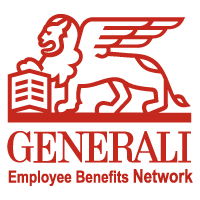How to increase use of the EAP as part of your financial wellness strategy

This is the opinion of 77% of employer respondents to a recent piece of research entitled Wellbeing in the Workplace, conducted by Reward magazine and sponsored by Generali, along with others.
It’s quite telling that 75% of respondents said that financial wellbeing worries such as personal debt affected their workforce, the direct impact of which was felt to be increased levels of stress, according to 66% of respondents, followed by lower productivity (45%).
It’s a well-known fact, as highlighted by countless absence management surveys by the Chartered Institute of Personnel and Development, that stress is the biggest cause of long-term absence. An EAP is cited as one of the most popular tools used by employers to help with long-term sickness, according to the Reward research. It features in third place with 60% of respondent votes, behind income replacement (77%) and rehabilitation support (67%).
The lowdown on EAPs
Although market share information on the sector is hard to come by, it is estimated by the business-led charity Business in the Community that around 47% of employees in the UK have access to an EAP.
Their popularity really took off following a Court of Appeal ruling in 2002 (Sutherland v Hatton) which stated that an EAP could protect an employer from employees’ stress claims, but this was clarified in 2007 when judges said employers needed to do more to support staff than simply offer an EAP.
The thinking now is that it should form part of a wider corporate wellbeing strategy and needs to be much better communicated to employees to help improve utilisation, the average rate for which currently resides around 10% of the workforce, according to the Employee Assistance Professionals Association (EAPA).
These services have come a long way from their humble beginnings in the US in the 1950s, when they were designed to help employees tackle alcohol-related problems. They made their way to the UK, in a more comprehensive format, in the 1980s and now offer support for employees on issues inside and outside work – such as relationships, finance, legal advice, childcare/eldercare, mental health, as well as workplace issues.
Costs depend on the number of employees and the breadth of the service, but the average annual running cost is £14 per employee for a comprehensive option, according to the EAPA.
It’s worth noting that EAPs also tend to appear as standard as part of added-value wellbeing services in group income protection (IP) policies.
Ongoing stigma
Research from Lancaster University’s The Work Foundation reveals there is ongoing stigma in the workplace around EAPs, with many viewing them as geared solely at counselling for those with mental health issues. Professor Cary Cooper CBE, President of the CIPD, wrote about the woeful under-utilisation of EAPs despite their vast potential to improve employee wellbeing if they are promoted in a more proactive way, giving staff access to them before they reach crisis point. Fortunately, there are ways to help push up usage.
Top tips to help increase EAP usage
1) Include in line manager training
If line managers have referral to EAP as one of their tools when dealing with employees, the number of service users will increase.
2) Access to online services & apps
An increasing number of EAPs now include online resources, plus apps that can be downloaded onto digital devices. Basically, the more communication interface options the better to help reach audiences of a wide demographic. Logging into a service is simpler and less personal that speaking to a person, and this facility is particularly popular among younger employees and men.
3) Regularly communicate & promote the services available
Focus on the preventative aspects of financial wellbeing and keep the messages upbeat – prevention is always better than cure and the key is to get the message across that the EAP contains a vast amount of information and resources to help raise financial awareness and understanding, in effect preventing big issues mounting. It’s not all about counselling support through the bad times, although this is a valuable service too.
4) Take advantage of the free support services offered by group IP providers
These can vary massively from provider to provider and it’s well worth finding out what’s available. For example, Generali recently launched a Wellbeing Communications Hub, which gives employers the opportunity to produce employer-branded communications material such as posters, leaflets, presentations etc at no cost for digital material. The provider’s EAP app can also be downloaded from the communications hub.
5) Carry out feedback surveys
Consider introducing anonymous feedback surveys to assess how useful employees found the service. Group IP providers can help with this aspect too.
6) Work with providers to assess usage
EAP providers can provided anonymised information on usage to allow you to track trends and identify hot spots. This information can help you better target your communications, tracking usage and utilisation over time so that time and spend is much better targeted.
Simon Thomas is director UK Employee Benefits, Generali.
This article was provided by Generali.
Supplied by REBA Associate Member, Generali Employee Benefits Network
Generali Employee Benefits' solutions are to protect and enhance the wellbeing of their workforce.







